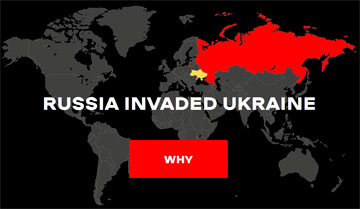#VU102801 Heap-based buffer overflow in Microsoft products - CVE-2025-21171
Vulnerability identifier: #VU102801
Vulnerability risk: Medium
CVSSv4.0: 4.8 [CVSS:4.0/AV:N/AC:L/AT:P/PR:N/UI:A/VC:H/VI:H/VA:H/SC:N/SI:N/SA:N/E:U/U:Green]
CVE-ID:
CWE-ID:
CWE-122
Exploitation vector: Network
Exploit availability: No
Vulnerable software:
.NET for Linux
Universal components / Libraries /
Software for developers
.NET for macOS
Universal components / Libraries /
Software for developers
Visual Studio
Universal components / Libraries /
Software for developers
PowerShell for Linux
Universal components / Libraries /
Software for developers
PowerShell for macOS
Universal components / Libraries /
Software for developers
.NET
Other software /
Other software solutions
PowerShell
Client/Desktop applications /
Software for system administration
Vendor: Microsoft
Description
The vulnerability allows a remote attacker to execute arbitrary code on the target system.
The vulnerability exists due to a boundary error in .NET. A remote attacker can pass specially crafted data to the application, trigger a heap-based buffer overflow and execute arbitrary code on the target system.
Successful exploitation of this vulnerability may result in complete compromise of vulnerable system.
Mitigation
Install updates from vendor's website.
Vulnerable software versions
.NET for Linux: 9.0.0
.NET for macOS: 9.0.0
.NET: 9.0, 9.0.0
Visual Studio: 17.1.0 17.1.32210.238, 17.1.1 17.1.32228.430, 17.1.2 17.1.32319.34, 17.1.3 17.1.32328.378, 17.1.4 17.1.32407.343, 17.1.5 17.1.32414.318, 17.1.6 17.1.32421.90, 17.1.7 17.1.32428.221, 17.6.0 17.6.33712.159, 17.6.1 17.6.33717.318, 17.6.2 17.6.33723.286, 17.6.3 17.6.33801.468, 17.6.4 17.6.33815.320, 17.6.5 17.6.33829.357, 17.6.6 17.6.33927.249, 17.6.7 17.6.34031.178, 17.6.8 17.6.34202.202, 17.6.9 17.6.34221.33, 17.6.10 17.6.34302.98, 17.6.11 17.6.34408.137, 17.6.12 17.6.34601.182, 17.6.13 17.6.34701.35, 17.6.14 17.6.34728.177, 17.6.15 17.6.34902.100, 17.6.16 17.6.34931.59, 17.6.17 17.6.35028.176, 17.6.18 17.6.35201.154, 17.6.19 17.6.35230.93, 17.6.20 17.6.35326.246, 17.6.21 17.6.35430.205, 17.8.0 17.8.34309.116, 17.8.1 17.8.34316.72, 17.8.2 17.8.34322.80, 17.8.3 17.8.34330.188, 17.8.4 17.8.34408.163, 17.8.5 17.8.34511.84, 17.8.6 17.8.34525.116, 17.8.7 17.8.34601.278, 17.8.8 17.8.34701.33, 17.8.9 17.8.34728.176, 17.8.10 17.8.34902.127, 17.8.11 17.8.34931.61, 17.8.12 17.8.35027.43, 17.8.13 17.8.35201.163, 17.8.14 17.8.35230.98, 17.8.15 17.8.35326.199, 17.8.16 17.8.35430.204, 17.10.0 17.10.34916.146, 17.10.1 17.10.34928.147, 17.10.2 17.10.35004.147, 17.10.3 17.10.35013.160, 17.10.4 17.10.35027.167, 17.10.5 17.10.35122.118, 17.10.6 17.10.35201.131, 17.10.7 17.10.35230.96, 17.10.8 17.10.35326.205, 17.10.9 17.10.35431.56
PowerShell: before
PowerShell for Linux: before 7.5.0
PowerShell for macOS: before 7.5.0
External links
https://portal.msrc.microsoft.com/en-US/security-guidance/advisory/CVE-2025-21171
Q & A
Can this vulnerability be exploited remotely?
Yes. This vulnerability can be exploited by a remote non-authenticated attacker via the Internet.
Is there known malware, which exploits this vulnerability?
No. We are not aware of malware exploiting this vulnerability.
